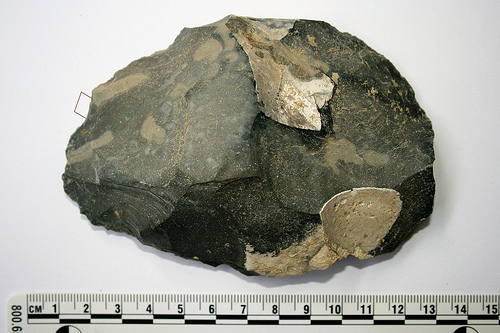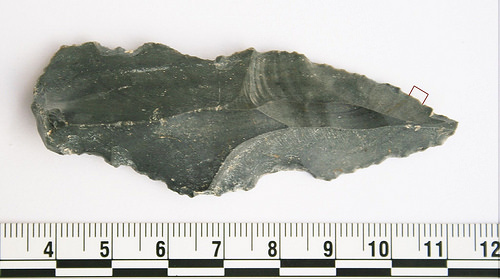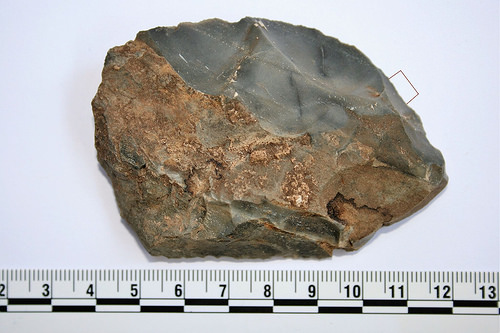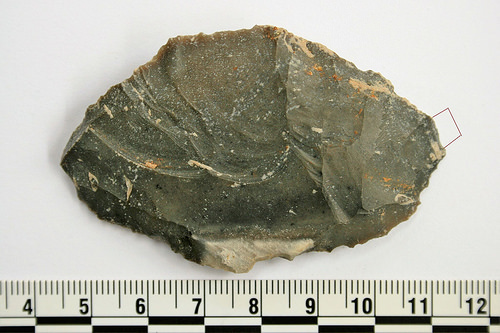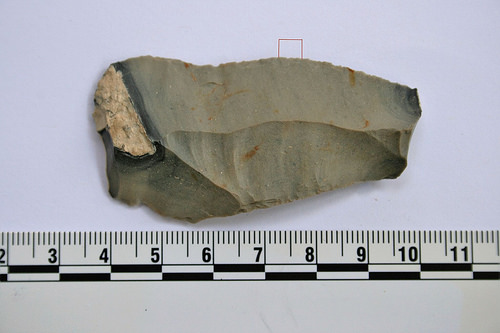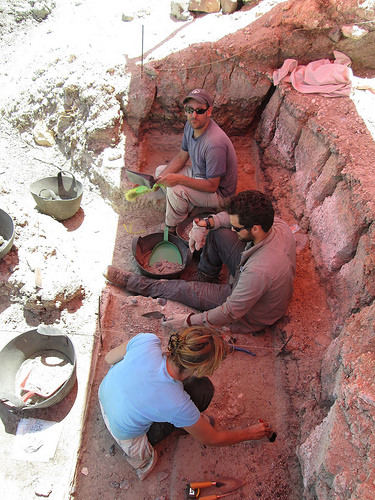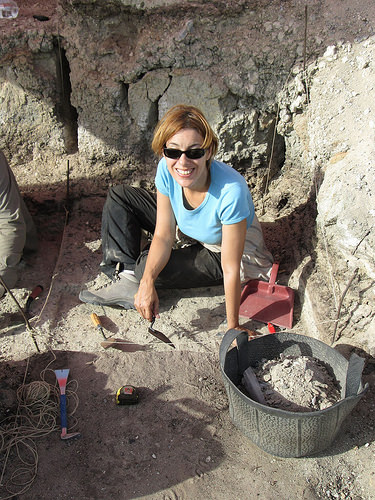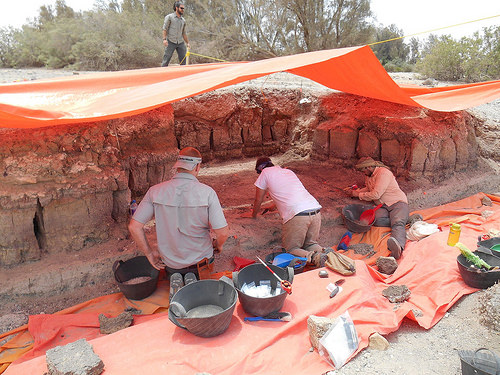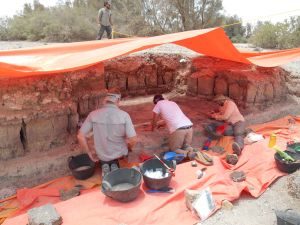
UNIVERSITY OF VICTORIA—How smart were human-like species of the Stone Age? New research published in the Journal of Archaeological Science by a team led by paleoanthropologist April Nowell of the University of Victoria reveals surprisingly sophisticated adaptations by early humans living 250,000 years ago in a former oasis near Azraq, Jordan.
The research team from UVic and partner universities in the US and Jordan has found the oldest evidence of protein residue—the residual remains of butchered animals including horse, rhinoceros, wild cattle and duck—on stone tools. The discovery draws startling conclusions about how these early humans subsisted in a very demanding habitat, thousands of years before Homo sapiens first evolved in Africa.
The team excavated 10,000 stone tools over three years from what is now a desert in the northwest of Jordan, but was once a wetland that became increasingly arid habitat 250,000 years ago. The team closely examined 7,000 of these tools, including scrapers, flakes, projectile points and hand axes (commonly known as the “Swiss army knife” of the Paleolithic period), with 44 subsequently selected as candidates for testing. Of this sample, 17 tools tested positive for protein residue, i.e. blood and other animal products.
__________________________________
Hand axe, tested positive for horse residue. Image courtesy of April Nowell.
_____________________________________________
Blade, tested positive for rhino residue. Image courtesy of April Nowell.
______________________________________
Flake, tested positive for bovine (wild cattle) residue. Image courtesy of April Nowell.
_______________________________________
Flake, tested positive for horse residue. Image courtesy April Nowell.
____________________________________________________
Blade, tested positive for camel residue. Image courtesy April Nowell.
_______________________________________________________
“Researchers have known for decades about carnivorous behaviours by tool-making hominins dating back 2.5 million years, but now, for the first time, we have direct evidence of exploitation by our Stone Age ancestors of specific animals for subsistence,” says Nowell. “The hominins in this region were clearly adaptable and capable of taking advantage of a wide range of available prey, from rhinoceros to ducks, in an extremely challenging environment.”
“What this tells us about their lives and complex strategies for survival, such as the highly variable techniques for prey exploitation, as well as predator avoidance and protection of carcasses for food, significantly diverges from what we might expect from this extinct species,” continues Nowell. “It opens up our ability to ask questions about how Middle Pleistocene hominins lived in this region and it might be a key to understanding the nature of interbreeding and population dispersals across Eurasia with modern humans and archaic populations such as Neanderthals.”
Another result of this study is the potential to revolutionize what researchers know about early hominin diets. “Other researchers with tools as old or older than these tools from sites in a variety of different environmental settings may also have success when applying the same technique to their tools, especially in the absence of animal remains at those sites,” adds Nowell.
_________________________________
UVic anthropologist and lead investigator April Nowell with co-authors Chris Ames (center) and Stuart Lipkin (Azraq, 2013). Image courtesy James Pokines (also a co-author).
____________________________________________
Nowell on site (Azraq, 2014). Image courtesy James Pokines.
____________________________________________
Amer Al-Souliman of Hashemite University, Jordan (right) with UVic students (l-r) Jeremy Beller (PhD candidate) and John Murray (MA candidate), 2015. Image courtesy of Beller/Murray.
_________________________________
Source: Unversity of Victoria press release.
____________________________________________
The paper, “Middle Pleistocene Subsistence in the Azraq Oasis, Jordan: Protein residues and other proxies,” appears in the September issue of the Journal of Archaeological Science, 73 (2016) 36-44, published by Elsevier. The paper is co-authored by Nowell and Daniel Stueber of the University of Victoria; Christopher Ames, also of UVic and of the University of California, Berkeley; Cameron Walker of Oregon Health and Science University; Carlos Cordova of Oklahoma State University; James Pokines of Boston University School of Medicine and with the Office of the Chief Medical Examiner in Boston; Regina DeWitt of East Carolina University; and Amer Al-Souliman of Hashemite University, Jordan.
This research was fully funded by a grant from the Social Sciences and Humanities Research Council of Canada.
____________________________________________

______________________________________________
Travel and learn with Far Horizons.
____________________________________________
This richly illustrated issue includes the following stories: Recent findings shedding new light on the whereabouts of the remains of Philip of Macedon, father of Alexander the Great; how an archaeologist-sculptor is bringing bones of the dead back to life; archaeologists uncovering town life at the dawn of civilization; an exclusive interview with internationally acclaimed archaeologist James M. Adovasio about what makes the Meadowcroft Rockshelter prominent in the ongoing search for the first Americans; what archaeologists are finding at the site of the ancient city of Gath, the home town of the biblical Philistine giant, Goliath; and how scientists are redrawing the picture of human evolution in Europe. Find it on Amazon.com.

